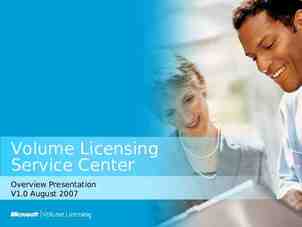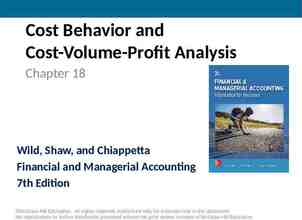6th Annual Legislative Conference April 22, 2022 1
48 Slides529.04 KB

6th Annual Legislative Conference April 22, 2022 1

2

ICUNJ’s 14 non-profit, independent colleges and universities are an important, strategic asset within the State’s higher education system Provide fourteen additional options for students to CHOOSE college or university setting that best fits their needs – size, location, culture, program offerings, etc. Offer additional opportunities for students to continue education in New Jersey rather than leaving Serve diverse racial, ethnic and economic populations that match public sector and state’s diverse demographics Provide high quality undergraduate and graduate education in wide variety of disciplines to meet workforce demands 3

ICUNJ’s 14 non-profit, independent colleges and universities are an important, strategic asset within the State’s higher education system Provide opportunities for valuable and important research that will help support the State’s economic growth Attract out-of-state and international students to offset out-migration Results with limited taxpayer funding – approximately 130 million with 90% directly to students Economic impact of between 4 billion and 4.5 billion– 27 or 30 to 1 return on state investment 4

Importance of independent colleges and universities highlighted in 2010 “Kean Commission” report “Overall, the independent colleges and universities expand the diversity and choice afforded to New Jersey’s college students, and they have done so for a long time.” “New Jersey’s independent colleges and universities serve an important public purpose. They annually award almost as many baccalaureate degrees and advance degrees – master’s, professional, and doctorate – as New Jersey’s three public research institutions.” 5

Over 63,000 students attend non-profit public mission independent colleges and universities Fall 2021 8391; 0 10681; 0 69541; 0 63671; 0 51684; 0 114752; 0 61440; 0 Rutgers NJIT/Rowan/Montclair State colleges and universities Community Colleges Public mission independents Proprietary independents Religious independents 6

Over one in five of four year undergraduate students attend non-profit public mission independent colleges and universities Fall 2021 8091; 0 5822; 0 49342; 0 43149; 0 40382; 0 Rutgers NJIT/Rowan/Montclair State Colleges and Universities Public mission independents Proprietary independents Religious independents 52304; 0 7

Nearly one-third of graduate and professional students attend independent colleges and universities Fall 2021 300; 0 4859; 0 Rutgers 20199; 0 NJIT/Rowan/Montclair State Colleges and Universities 20522; 0 Public mission independents 11302; 0 Proprietary independents Religious independents 9136; 0 8

Diversity in undergraduate enrollment at independent colleges is similar to public colleges (2020 - 2021) 50.0% 40.0% 30.0% 20.0% 10.0% 0.0% ICUNJ Public 9

Diversity in undergraduate enrollment at independent colleges has shifted from 2010-2011 to 2020-2021 60.0% 50.0% 40.0% 30.0% 20.0% 10.0% 0.0% 2010-2011 2020-2021 10

More than half of State’s Four-Year Minority Serving Institutions are ICUNJ members Bloomfield College (HSI/PBI) Caldwell University (HSI) Fairleigh Dickinson University– Metro (HSI) Felician University (HSI) Saint Elizabeth University (HSI) Saint Peter’s University (HSI) 11

Independent colleges and universities have three of the five highest percentage of African-American undergraduate enrollment (2020-2021) 60.0% 50.0% 50.9% 40.0% 30.1% 30.0% 22.3% 20.0% 19.9% 19.4% Kean Felician 10.0% 0.0% Bloomfield Saint Elizabeth NJCU 12

Independent colleges and universities have three of the six highest percentage of Hispanic enrollment (2020-2021) 50.0% 45.0% 43.8% 42.6% 40.0% 35.0% 33.2% 32.0% 32.1% 31.1% WPU Felician Kean Bloomfield 30.0% 25.0% 20.0% 15.0% 10.0% 5.0% 0.0% St Peter's NJCU 13

Independent colleges and universities serve similar low-income population as senior public colleges and universities – federal PELL grants (2020-2021) 40.0% 37.6% 35.0% 33.4% 30.0% 25.0% 20.0% 15.0% 10.0% 5.0% 0.0% Public ICUNJ 14

Independent colleges and universities serve similar lowincome populations as senior public colleges and universities – State TAG grants (2020-21) 37.0% 36.0% 35.7% 35.0% 34.0% 33.0% Full Time Undergrad 32.0% 30.9% 31.0% 30.0% 29.0% 28.0% Public AICUNJ 15

Eleven independent colleges and universities have smaller undergraduate enrollment than the smallest state college or university – eight are less than half the size (Fall 2021) 6,000 5,000 5,145 4,000 4,067 4,080 3,000 3,232 2,000 1,000 752 1,128 1,299 1,612 1,631 1,635 1,999 2,134 0 16

Smaller size institution leads to lower student faculty ratios 18 16 16 14 12 12 10 8 6 4 2 0 ICUNJ Public Student Faculty Ratio 17

Independent college and university graduates are helping to meet NJ’s workforce demand of 21st century (2018 graduates) 63% 64% 70% 60% 47% 50% 40% 30% 20% 10% 49% 48% 51% 36% 23% 30% 27% 26% 26% 25% 12% 28% 26% Bachelor Graduate 0% 18

Providing choice for students and providing results for workforce with limited state resources nearly 1.9 billion vs 129 million (FY 2021) 2,000.0 1,800.0 1,600.0 1,400.0 1,200.0 Fringe Operating TAG/EOF/STARS II 1,000.0 800.0 600.0 400.0 200.0 0.0 Public 4 year ICUNJ 19

Providing choice for students and providing results for workforce with limited state resources 12,600 per student vs 2700 per undergraduate student (FY 2021) 14,000 12,000 10,000 8,000 6,000 12,600 4,000 2,000 2,700 0 Public 4 year ICUNJ 20

Providing choice for students and providing results for workforce with limited direct state resources for operating aid over 1.8 billion vs 20 million (proposed FY 2023) 2,000.0 1,800.0 1,600.0 1,400.0 1,200.0 Fringe Operating 1,000.0 800.0 600.0 400.0 200.0 0.0 Public 4 year AICUNJ 21

Direct state operating support less than half of FY 2008 levels while costs have risen 30.0 25.0 20.0 15.0 10.0 5.0 0.0 24.0 20.4 19.5 18.4 16.4 28.0 9.5 7.0 3.0 0.0 0.0 0.0 1.0 1.0 1.5 1.0 1.0 1.0 1.7 22

Independent colleges and universities strive to keep cost down for students Provide over 1 billion in institutional aid 95% of first time full-time undergraduate students receive some institutional aid including some “promise” programs Over 80% of all student aid comes from institutions Partnerships with county colleges – 2 2 programs – Guaranteed admission programs – Discounted tuition for transfers from county colleges – Degree completion at county college 23

15% of students attending ICUNJ institutions will pay NOTHING and over 40% of students paid less than 10,000 in tuition and mandatory fees in 2018-19 due to federal, state and institutional aid 30.0% 25.0% 20.0% 15.0% 26.6% 25.6% 20.6% 10.0% 15.5% 11.6% 5.0% 0.0% No cost Less than 10,000 10,001 to 20,000 20,001 to 30,000 More than 30,000 24

NJ Independent colleges “net price” competitive with NJ public colleges and NY and PA independent colleges (2017-2018) 40,000 37,686 35,285 35,000 31,218 29,050 30,000 23,970 22,484 25,000 19,648 17,756 20,000 15,781 15,000 17,115 20,543 18,686 26,896 26,260 24,669 26,016 21,667 19,977 14,541 12,916 10,000 5,000 0 0- 30k 30k - 48k NJ Private 48k - 75k NJ Public PA Private 75k - 110k 110k NY Private 25

Independent colleges and universities provide over 4 billion economic impact to NJ 35 - 40 to 1 return on taxpayer investment Over 20,000 employees with payroll of over 1.2 billion Additional contract employees in areas of facilities, food service, bookstores, etc. Additional money spent on private vendors and contractors including engineers, architects, lawyers, etc. 26

Independent colleges and universities provide over 4 billion economic impact to NJ Projected capital construction of nearly 2 billion in 2022 and 2023 Out-of-state and international students bring in new money to the state Nearly 600,000 living alumni with more than half still living in New Jersey Excited to work with Governor and Legislature on future economic development initiatives and growing economy 27

Legislative Agenda FY 2023 Budget Increase of 5 million in operating aid Increase operating aid from proposed 8.5 million to 13.5 million – still below 16 million in FY 2010 and 28 million full funding level Increase would provide funding to offset cost drivers including unprecedented inflation, legislative mandates and provide enhanced student services such as mental health 28

Legislative Agenda FY 2023 Budget Increase in TAG and EOF Requesting 10 million for minimum 2% increase in TAG awards for ALL students Support historical allocation of funding to all students concerned about last year allocation that favored less then one-third of students Support Governor’s proposed increase in EOF and request 1 million increase in support program component 29

Maintaining current TAG eligibility and grant levels is vital to allow students broadest choice 2010 “ Kean Commission” recommended “The State should maintain current policies regarding Tuition Aid Grant funding at all eligible institutions of higher education in New Jersey” “Students and institutions alike rely on this funding. Significant changes in policy that reduce aid can cause some students to no longer be able to afford their college education, and can jeopardize the financial strength of the institutions themselves.” 30

Legislative Agenda FY 2023 Budget Expand Garden State Guarantee Requesting Garden State Guarantee be expanded to non-profit independent colleges and universities that agree to similar program requirements. Funding should follow the student and allow them to make the decision on which college to attend based on their educational. NY program covers both public and independent. 31

Summary Our 14 independent, non-profit, public-mission colleges and universities are an important component of the overall higher education structure in New Jersey Work diligently to continue to provide the access and affordability to offer students more choices and opportunities to stay in New Jersey for college education thus limiting the out-migration Face numerous challenges in a market that is becoming more competitive Want to work cooperatively with Legislature and Governor on improving access, affordability and the quality of higher education in New Jersey 32

Thank You FY 2022 increase in operating aid to 7 million Expansion of EFA statute to allow working capital loans and affiliated entity financing Recognition of higher education role in research and economic development Listening to our concerns and issues when considering legislation 33

34

Operating Aid/Student Aid/Capital Decline in high school graduates/Questioning of Value of College/Impact of GSG Residual Impact of COVID – Costs/Housing Revenue/Student Preparedness State Support & Assistance State and Federal Mandates/Program Approval Process Campus Mental Health Campus Cost Drivers – Inflation/Employee Retention & Recruitment 35

Residual Impact of COVID on Costs, Revenue and Student Preparedness Costs have continued through the current academic year, and some will continue in future – Testing remains a priority and with NCAA a requirement – Cleaning supplies, PPP, technology – Staffing issues Housing revenue down in current semester due to reduced capacity and demand Fixed costs such as debt service, HVAC, insurance, maintenance are same regardless if at 100% or 75% Hope that this turns around as we move away from pandemic Incoming students in Fall 2021 and Fall 2022 are impacted by disruptions in their last years of high school Remedial help will be needed; importance of the EOF support services 36

Campus Mental Health Major issue BEFORE COVID and institutions were focusing more resources even when state support was diminished COVID expanded the need and shined a light on issue Recognize broader than just college students OSHE survey shows it is major issue in ALL institutions Each campus continues to work on these needs of their students OSHE/PC have established ad-hoc committee – needs assessment and best practices Professionals from our campuses need to be at the table 37

Campus Mental Health Governor noted in budget that he will work with the Legislature to develop and implement student mental health and success initiatives with the American Rescue Plan State Fiscal Recovery Fund (ARP SFRF). These initiatives would provide funds to school districts and colleges so they could access mental health services for students directly or connect students with mental health providers in their communities. Numerous legislative initiatives – need to recognize one size does not fit all and there will be costs Resources would be helpful either thru greater increase in operating aid or use of ARP funds Recognize that the community-based support system needs to be strengthened since many campuses rely on them since they do not have sufficient campus-based staff 38

Campus Cost Drivers Recent Moody’s report - Colleges face their highest expense growth in over a decade as rising costs combine with wage inflation, labor shortages and a push to hire Inflation impacts food, fuel, heating, and other commodities Staff will be pushing for larger salary increases Difficult environment to maintain staff and recruit new staff – salary demands are increasing due to strong job market Federal support from COVID is gone and may have to use campus funds to replace 39

State and Federal Regulatory Environment Recognize that many statutory and regulatory mandates may have sound policy basis BUT there are increased costs to compliance Smaller institutions do not have the FTEs that larger institutions have to comply The increased number of even small mandates is like the children’s game “straw that broke camels back” – the cumulative impact is what is potentially harmful 40

State and Federal Regulatory Environment Many of the new requirements will not help students either academically or in decision making on which college to attend Provide data that “think tanks”, advocacy groups and academics will use to support their policy efforts Ask that you consult prior to any new mandates on the actual impact Consider a “red-tape” commission to look at existing mandates 41

State and Federal Regulatory Environment Program review process is cumbersome and time consuming Perspective of those that came from other states Does not allow the flexibility and “nimbleness” to react changing workforce needs 42

Recent Mandates 2018-2019 & 2020-2021 Sessions Financial reporting and monitoring Inclusion in 2009 New Jersey College Student and Parent Consumer Information Act including expansion of data required Develop open textbook plans Increase in minimum wage Earned Sick Leave Require notification of students on income-based repayment and other loan repayment estimates Mental health issues 43

Enrollment Challenges Approaching a cliff in high school graduates Not clear how COVID will impact future student decisions; could be positive if students want to stay closer to home Continuing national dialogue on value of higher education and bachelor degrees NJ marketing campaign that expands on “BeMore” is needed to promote NJ colleges and the importance of college education 44

Enrollment Challenges Moody’s report - rising wages and a low unemployment rate can convince high school graduates and those who might go back to college to instead seek work Moody’s report - inflation hits low-income households — and the students who come from them — hardest. Higher prices for necessary expenses like food and transportation mean less discretionary income to spend on priorities like tuition. State Garden State Guarantee may push students to the “free” option over what could be best for them Need to consider expansion of GSG to ICUNJ institutions to allow aid to follow the student to enhance student choice– NY program covers both public and independent 45

State Support Necessary to Offset the Issues and Challenges Each of these issues highlights the need for State support to meet the needs of the independent colleges and maintain us as viable and stable options for students to choose Operating aid increases allow us revenue to offset the cost drivers, legislative mandates and provide enhanced student services such as mental health TAG and EOF help level the playing field to allow students to choose best option – GSG should also be expanded to allow more student choice EOF support services program provides resources to help those students that need them especially those that had their high school years interrupted by COVID Capital funding allows us to keep facilities up to date; students notice these issues when visiting campus State support of a marketing campaign would help keep NJ high school students in the state and thus increase overall enrollment 46

Recent Moody’s Report on Higher Education Colleges face their highest expense growth in over a decade as rising costs combine with wage inflation, labor shortages and a push to hire. At the same time, volatility has returned to the investment market, and recent public funding increases are waning. Colleges also face mounting enrollment uncertainty that raises risks for tuition-dependent institutions that lack a national brand and deep pockets. Expect the converging pressures to squeeze many colleges' budgets in fiscal 2023 and beyond. 47

Recent Moody’s Report on Higher Education The tight labor market doesn't merely drive-up colleges' costs. It contributes to enrollment uncertainty and, by extension, to unclear revenue prospects. That's because rising wages and a low unemployment rate can convince high school graduates and those who might go back to college to instead seek work. At the same time, inflation hits low-income households — and the students who come from them — hardest. Higher prices for necessary expenses like food and transportation mean less discretionary income to spend on priorities like tuition, Moody's noted. 48






